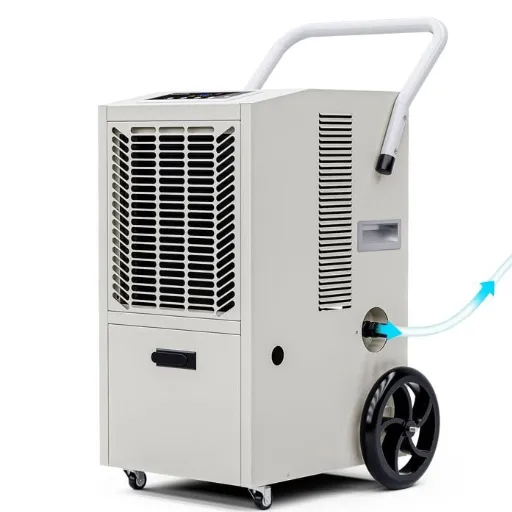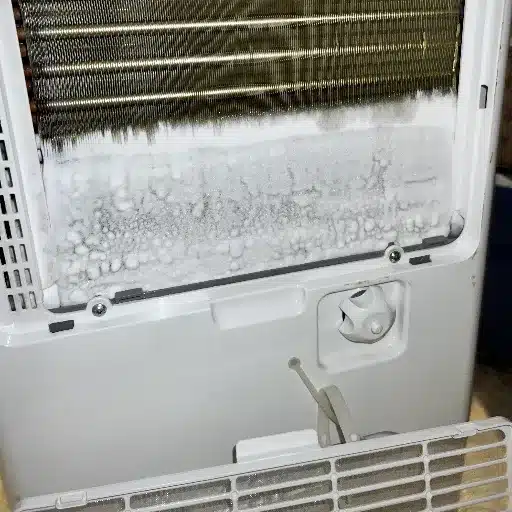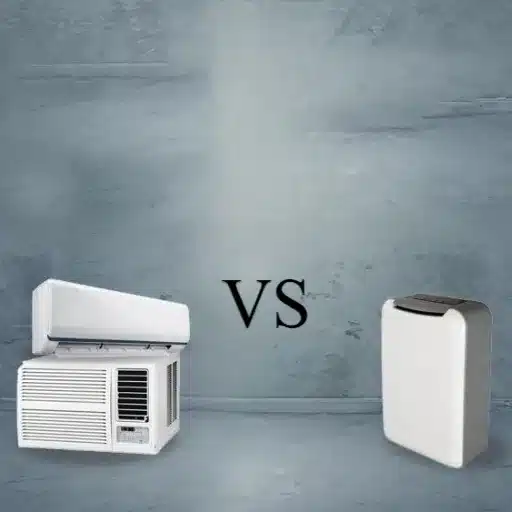Causes of Humidity in Crawl Spaces
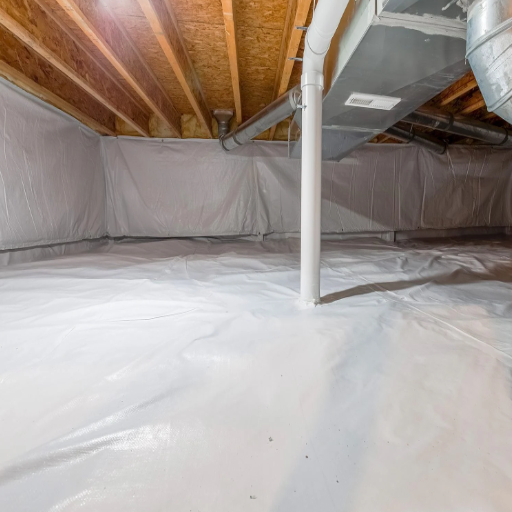
Poor Ventilation
One of the primary culprits behind crawl space humidity stems from inadequate ventilation. Without proper airflow, moisture from the ground and immediate environment becomes trapped, creating a damp and stagnant atmosphere.
Key Warning Signs:
- Stale, musty odors
- Condensation on surfaces
- Visible mold or mildew growth
- Deteriorating insulation
The Problem Cycle:
- Poor ventilation traps moisture
- Warm outside air meets cold crawl space surfaces
- Condensation forms and accumulates
- Mold and mildew begin to grow
- Structural materials deteriorate over time
Ventilation Solutions:
- Install mechanical ventilation systems
- Add or upgrade vent covers
- Seal crawl space with vapor barriers
- Conduct regular ventilation system inspections
Groundwater Infiltration
Groundwater infiltration occurs when water seeps from surrounding soil into below-ground spaces. This problem can result from elevated water tables, inadequate drainage systems, or compromised foundation structures.
| Cause | Description | Solution |
|---|---|---|
| Poor Grading | Surface water flows toward foundation | Regrade property to direct water away |
| Inadequate Gutters | Roof water pools near foundation | Install/repair gutters and downspouts |
| Foundation Cracks | Water enters through structural gaps | Seal cracks with waterproof materials |
| High Water Table | Groundwater rises to foundation level | Install sump pump system |
Climate-Related Factors
Weather patterns and climatic conditions significantly impact crawl space humidity levels. Understanding these factors helps in developing effective mitigation strategies.
- Increased Precipitation: Heavy rainfall overwhelms drainage systems
- Temperature Fluctuations: Freeze-thaw cycles create foundation cracks
- Seasonal Changes: Rapid wet-to-dry transitions stress structural elements
- Extreme Weather Events: Climate change increases frequency of severe conditions
Impact of Crawl Space Humidity on Homes
Mold Growth and Its Consequences
Mold growth becomes a critical concern when crawl space humidity exceeds 60%. This creates ideal conditions for mold spores to germinate and flourish on organic materials.
| Humidity Level | Mold Risk | Recommended Action |
|---|---|---|
| Below 30% | Very Low | Monitor for over-drying |
| 30-50% | Low | Ideal range – maintain current conditions |
| 51-60% | Moderate | Implement moisture control measures |
| Above 60% | High | Immediate intervention required |
Health Risks from Mold Exposure:
- Respiratory problems and allergic reactions
- Asthma complications
- Chronic sinus infections
- Severe health issues for immunocompromised individuals
- Mycotoxin exposure from toxic mold species
Wood Rot and Structural Damage
Wood rot develops when moisture content in wooden structures exceeds 20%, combined with poor ventilation. Different types of fungi cause varying degrees of damage:
- Brown Rot: Attacks cellulose, causing wood to become brittle
- White Rot: Degrades lignin, making wood soft and stringy
- Soft Rot: Creates surface cavities and weakens outer layers
Prevention Strategies:
- Maintain wood moisture content below 19%
- Apply fungicidal treatments and coatings
- Conduct regular inspections with moisture meters
- Use thermal imaging to identify problem areas
- Ensure proper water management systems
Health Risks for Occupants
Untreated moisture problems create multiple health hazards for building occupants, particularly affecting vulnerable populations.
| Health Risk | Cause | Affected Groups |
|---|---|---|
| Respiratory Issues | Mold spores, bacteria | Asthma sufferers, elderly, children |
| Legionnaires’ Disease | Legionella bacteria in stagnant water | Immunocompromised individuals |
| Toxic Exposure | Mycotoxins from black mold | All occupants with prolonged exposure |
| Particle Inhalation | Deteriorating asbestos/lead materials | All occupants, especially children |
Identifying Moisture Problems in Your Crawl Space
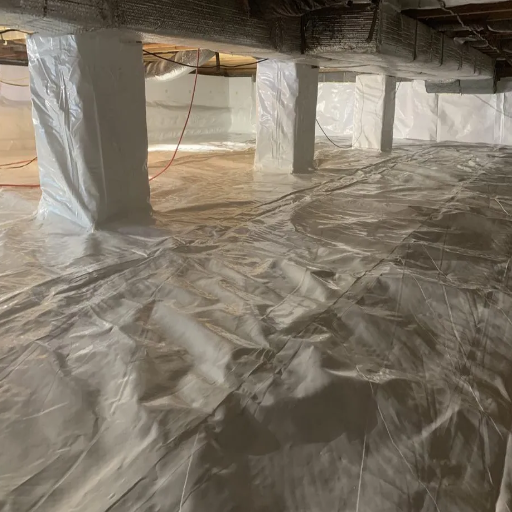
Signs of Excess Humidity
Early detection of moisture problems can prevent costly damage and health risks. Look for these warning signs:
Visual Indicators:
- Condensation on ductwork, pipes, or metal surfaces
- Darkened or warped wood structures
- Mold or mildew spots (black, green, or white)
- Wet or sagging insulation
- Water stains or mineral deposits
Environmental Indicators:
- Damp, musty odors
- Increased pest activity (termites, insects)
- Humidity readings above 60%
- Temperature variations
- Poor air circulation
Assessing Crawl Space Conditions
Proper assessment requires systematic monitoring and professional-grade equipment:
| Equipment | Purpose | Recommended Range |
|---|---|---|
| Digital Hygrometer | Measure humidity levels | 30-50% relative humidity |
| Thermohygrometer | Monitor temperature and humidity | 60-70°F temperature |
| Moisture Meter | Test wood moisture content | Below 20% for wood |
| Infrared Camera | Detect hidden moisture pockets | Temperature variations |
Effective Solutions to Keep Your Crawl Space Dry
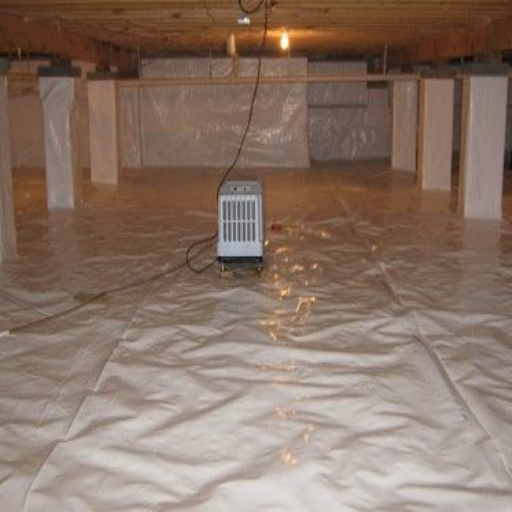
Sealing Air Leaks
Air sealing is fundamental to controlling crawl space humidity and improving energy efficiency.
Common Leak Locations:
- Rim joists and sill plates
- Ductwork penetrations
- Plumbing entry points
- Electrical conduit openings
- Foundation cracks
Recommended Materials:
- Spray Foam Insulation: Excellent for irregular gaps
- Caulk: Ideal for small cracks and joints
- Closed-Cell Foam: Superior moisture resistance
- Rigid Foam Board: Durable thermal barrier
Improving Drainage Around the Foundation
Proper drainage is essential for preventing water infiltration and maintaining foundation integrity.
| Drainage Method | Description | Effectiveness |
|---|---|---|
| Proper Grading | 6″ drop per 10 feet from the foundation | High – Primary defense |
| Gutter Systems | Collect and redirect roof water | High – Essential component |
| Downspout Extensions | Discharge water 5+ feet from the building | Medium – Prevents pooling |
| French Drains | Perforated pipes in gravel beds | High – Handles groundwater |
| Waterproof Coatings | Seal foundation walls | Medium – Additional protection |
Installing Vapor Barriers
Vapor barriers are critical components in comprehensive moisture control systems.
Installation Best Practices:
- Conduct a thorough site inspection
- Select appropriate material (perm rating < 1.0)
- Ensure proper sheet overlaps
- Seal seams with specialized tape or adhesives
- Consider smart vapor barriers for dynamic permeability
Material Options:
- Polyethylene Sheeting: Standard 6-mil thickness
- Reinforced Materials: Added durability for high-traffic areas
- Smart Barriers: Variable permeability based on humidity
Crawl Space Encapsulation and Humidity Control
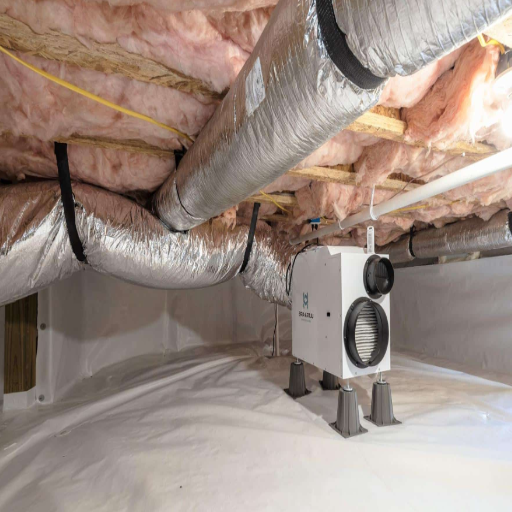
Benefits of Encapsulated Crawl Spaces
Complete crawl space encapsulation provides comprehensive moisture control and multiple additional benefits:
| Benefit | Impact | Measurement |
|---|---|---|
| Moisture Control | Prevents mold and mildew growth | Up to 50% humidity reduction |
| Indoor Air Quality | Eliminates contaminants from crawl space | 50% of home air originates from crawl space |
| Energy Efficiency | Reduces heating/cooling losses | 15-20% annual energy savings |
| Pest Prevention | Seals entry points for insects/rodents | Significant reduction in infestations |
| Structural Protection | Prevents wood rot and deterioration | Extended building lifespan |
Choosing the Right Dehumidifier
Selecting appropriate dehumidification equipment is crucial for maintaining optimal crawl space conditions.
Sizing Guidelines:
- Small Crawl Spaces (< 1,000 sq ft): 50 PPD capacity
- Medium Crawl Spaces (1,000-1,500 sq ft): 60 PPD capacity
- Large Crawl Spaces (> 1,500 sq ft): 70+ PPD capacity
Essential Features:
- ENERGY STAR Rating: Optimal efficiency and cost savings
- Built-in Hygrometer: Automated humidity monitoring
- Continuous Drainage: Eliminates manual emptying
- Auto Defrost: Prevents freezing in cold climates
- Low-Temperature Operation: Functions in cool environments
Maintaining Ideal Crawl Space Humidity Levels
Consistent monitoring and adjustment ensure optimal crawl space conditions year-round.
Target Humidity Range: 30-50%
- Below 30%: Risk of material drying and cracking
- 30-50%: Optimal range for health and structural integrity
- Above 50%: Increased risk of mold and pest problems
Monitoring and Control Systems:
- Smart Sensors: Real-time humidity tracking
- Automated Dehumidifiers: Self-adjusting moisture control
- Mechanical Ventilation: Controlled air exchange
- Regular Inspections: HVAC, insulation, and drainage checks
Frequently Asked Questions
A: High humidity in a crawl space can be caused by various factors, including poor ventilation, water leaks, and high groundwater levels. When moisture accumulates, it raises humidity levels in your crawl space, creating an environment conducive to mold growth and structural issues.
A: To keep humidity levels in your crawl space under control, consider installing a crawl space dehumidifier, ensuring proper ventilation, and using crawl space vapor barriers to prevent moisture intrusion. Regularly checking your crawl space for water leaks and puddles can also help manage crawl space moisture.
A: Signs of crawl space moisture problems include damp crawl space walls, a musty smell in your home, puddles in your crawl space, and visible mold growth. It’s crucial to address these issues promptly to maintain the structural integrity of your home.
A: Yes, humidity in the crawl space can significantly affect indoor humidity levels in your home. High moisture levels in your crawl space can lead to increased humidity levels inside, resulting in discomfort and potential health issues.
A: A crawl space dehumidifier works by removing excess moisture from the air in your crawl space. It draws humid air in, condenses the moisture, and releases dry air back into the crawl space, effectively reducing humidity levels and preventing moisture-related problems.
A: The ideal humidity level for a crawl space is generally between 30% and 50%. Keeping humidity in your crawl space within this range helps prevent mold growth and maintains a healthy environment for your home.
A: Crawl space moisture issues can lead to foundation repair needs by compromising the structural integrity of your home. High humidity levels can weaken the soil and cause settling or shifting, which may necessitate foundation repair to ensure safety and stability.
A: It is important to check your crawl space regularly to identify any signs of moisture issues, such as high humidity levels, water in the crawl space, or damp crawl space walls. Early detection can help prevent costly repairs and maintain a healthy living space.
A: Crawl space vapor barriers play a crucial role in moisture control by preventing ground moisture from evaporating into the crawl space air. Installing these barriers can help keep humidity levels low and protect your home from potential moisture damage and mold growth.
References and Additional Resources
- Mold and Moisture Checklist – North Carolina State University Extension: A comprehensive checklist for identifying and addressing moisture issues in crawl spaces and basements.
- Home Moisture Guide – Tennessee Department of Health: A detailed guide on managing moisture in homes, including crawl spaces.
- Crawl Space Humidity and Mold Growth – Pacific Northwest National Laboratory: Research discussing the impact of high humidity on mold growth and structural integrity in crawl spaces.


